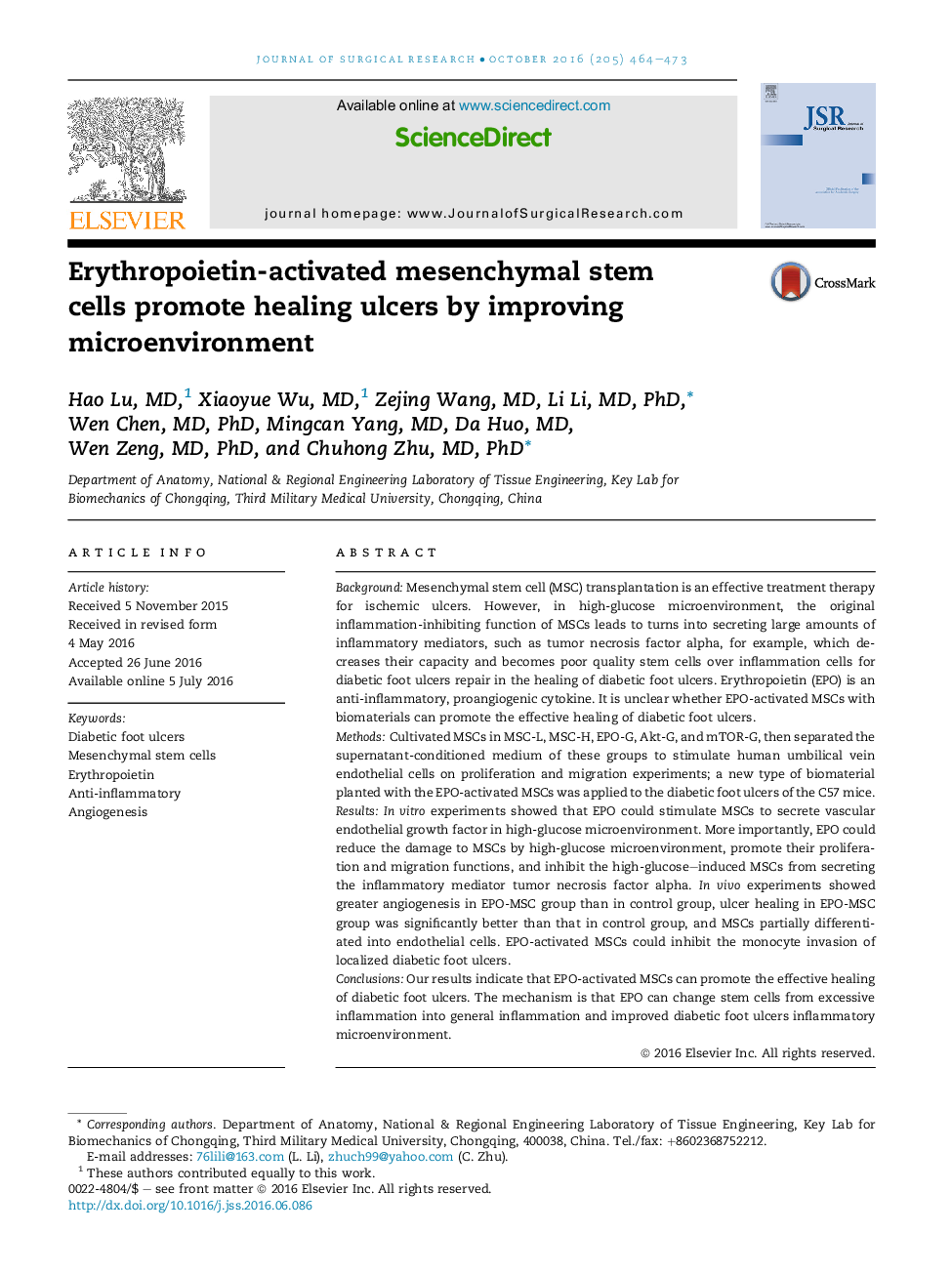| کد مقاله | کد نشریه | سال انتشار | مقاله انگلیسی | نسخه تمام متن |
|---|---|---|---|---|
| 4299060 | 1288380 | 2016 | 10 صفحه PDF | دانلود رایگان |
BackgroundMesenchymal stem cell (MSC) transplantation is an effective treatment therapy for ischemic ulcers. However, in high-glucose microenvironment, the original inflammation-inhibiting function of MSCs leads to turns into secreting large amounts of inflammatory mediators, such as tumor necrosis factor alpha, for example, which decreases their capacity and becomes poor quality stem cells over inflammation cells for diabetic foot ulcers repair in the healing of diabetic foot ulcers. Erythropoietin (EPO) is an anti-inflammatory, proangiogenic cytokine. It is unclear whether EPO-activated MSCs with biomaterials can promote the effective healing of diabetic foot ulcers.MethodsCultivated MSCs in MSC-L, MSC-H, EPO-G, Akt-G, and mTOR-G, then separated the supernatant-conditioned medium of these groups to stimulate human umbilical vein endothelial cells on proliferation and migration experiments; a new type of biomaterial planted with the EPO-activated MSCs was applied to the diabetic foot ulcers of the C57 mice.ResultsIn vitro experiments showed that EPO could stimulate MSCs to secrete vascular endothelial growth factor in high-glucose microenvironment. More importantly, EPO could reduce the damage to MSCs by high-glucose microenvironment, promote their proliferation and migration functions, and inhibit the high-glucose–induced MSCs from secreting the inflammatory mediator tumor necrosis factor alpha. In vivo experiments showed greater angiogenesis in EPO-MSC group than in control group, ulcer healing in EPO-MSC group was significantly better than that in control group, and MSCs partially differentiated into endothelial cells. EPO-activated MSCs could inhibit the monocyte invasion of localized diabetic foot ulcers.ConclusionsOur results indicate that EPO-activated MSCs can promote the effective healing of diabetic foot ulcers. The mechanism is that EPO can change stem cells from excessive inflammation into general inflammation and improved diabetic foot ulcers inflammatory microenvironment.
Journal: Journal of Surgical Research - Volume 205, Issue 2, October 2016, Pages 464–473
